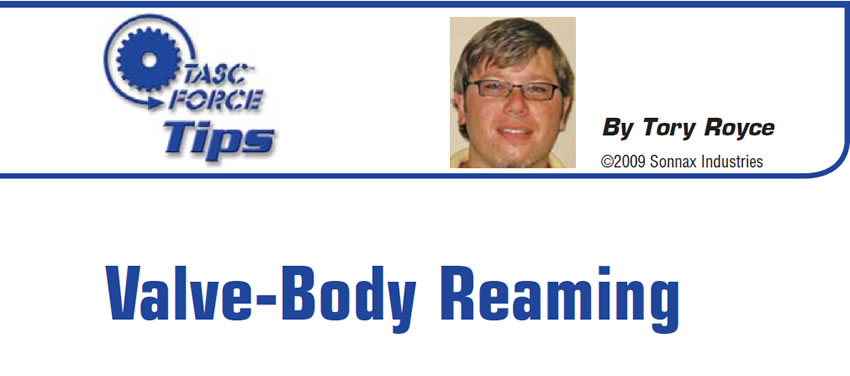Trading Places
Most builders swapping hard parts have learned that mismatching drive components in a transverse unit will result in a host of negative consequences. The wrong ratio sprocket(s) or carrier can result in TCC and ratio codes, along with converter and unit clutch slippage. Unfortunately, optional ratios aren’t exclusive to the final drive; they can exist in the valve body as well.
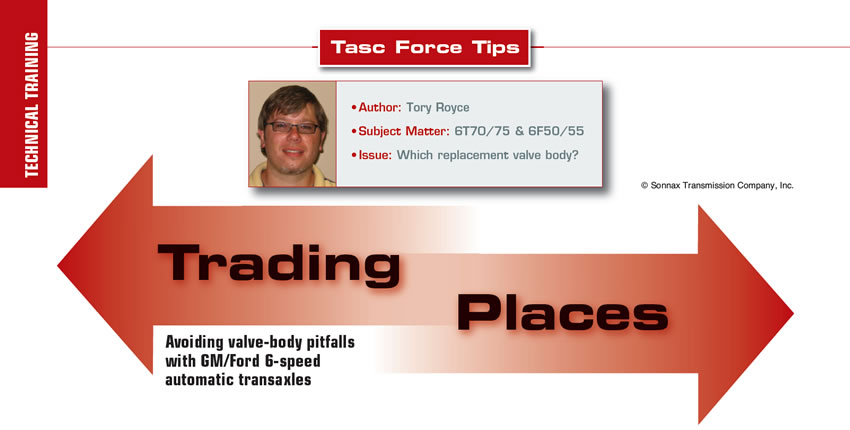
All in the Family
You may have noticed some similarities over the years in regard to a family of Chrysler transmissions that began with the Ultradrive 4-speed automatic in 1989. In its day it was fairly innovative, featuring clutch-to-clutch operation (no bands) and adaptive shift technology. Over time, the basic structure has developed into a variety of different models, some with 5- and 6-speed variations.
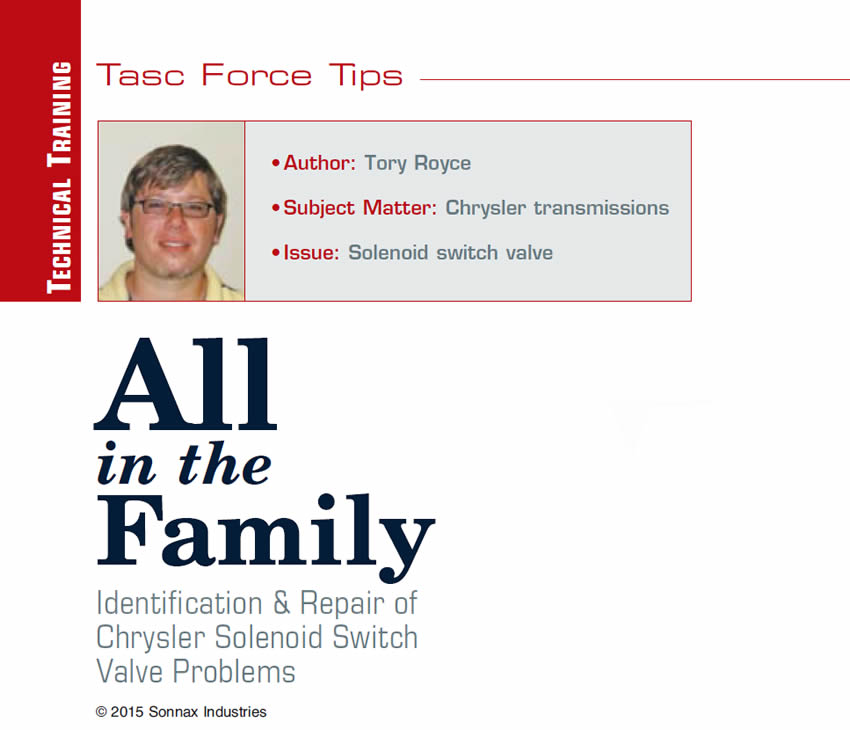
The Art of the Silver Bullet
Folklore has it that bullets cast from silver are the most effective means of dispatching werewolves, witches and vampires. Ever have one of those dreams where you conquer the bad guy and save the world? While this is possible in the fantasy realm, silver bullets don’t always provide heroic results in the real world, where many problems need to be solved with brains, not blind luck.
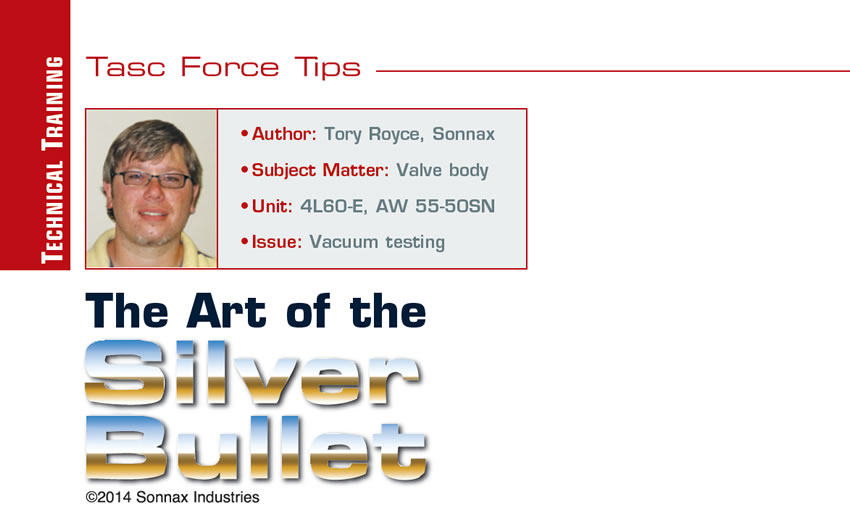
Valve-Body Bore Preparation
We’ve all been there. You get your bench set up to clean and inspect the valve body, pull the first retaining clip – and then it happens. The first bore you touch ends up having either a stuck end plug, valve, sleeve or – worse yet – all the above. Fast-forward a few steps and, what the heck, how did that O-ring get torn? Why do I always end up with sticking valves on the way back together?
The thing to keep in mind is that most valve bodies use aluminum castings that can dent, scratch and develop ridges very easily. Once this occurs, it can quickly lead to damaged components and lost time trying to repair them. The best place to start in avoiding this scenario is to understand why it happens.
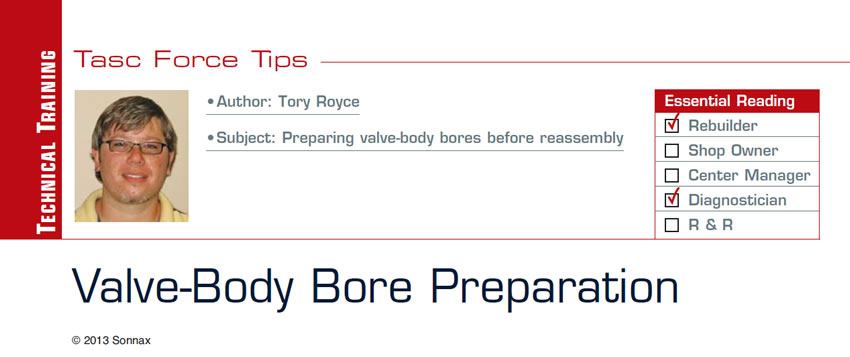
Valve-Body Reaming
When it comes to reaming valve bodies, there are always questions about how to approach things the “right” way. It pays to keep in mind that reaming a valve-body bore to allow installation of an oversized valve or sleeve is a precision operation and must be viewed with the mindset of a machinist. Properly maintained equipment, correct setup and the right cutting fluids are critical in achieving success. Here are a few suggestions we have compiled over the years in response to common inquiries.
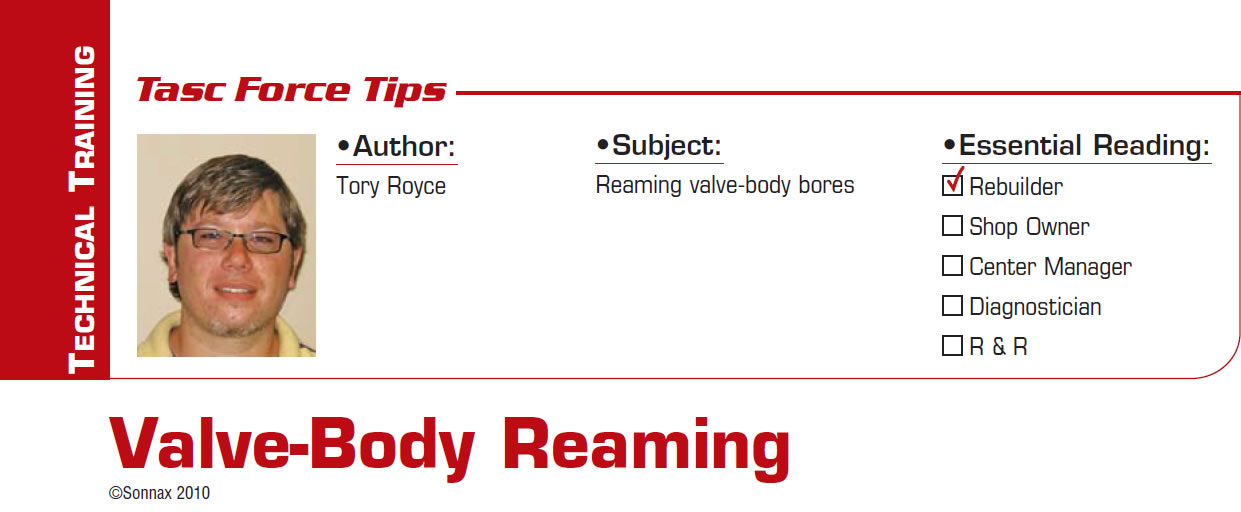
TF-60SN Accumulator-Body Caution
So you’ve got it figured out. The cause of that TF-60SN converter issue you’ve been fighting has finally been narrowed down to wear in the lockup-clutch control bore. Well, before you reach for that pot of gold at the end of the rainbow, here are a couple of things you should know.
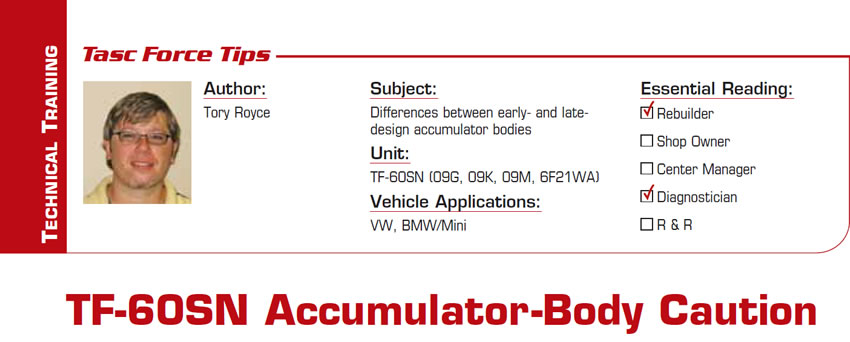
Valve-Body Reaming
When it comes to reaming valve bodies, there are always questions about how to approach things the “right” way. It pays to keep in mind that reaming a valve-body bore to allow installation of an oversized valve or sleeve is a precision operation and must be viewed with the mindset of a machinist. Properly maintained equipment, correct setup and the right cutting fluids are critical in achieving success. Here are a few suggestions we have compiled over the years in response to common inquiries.
